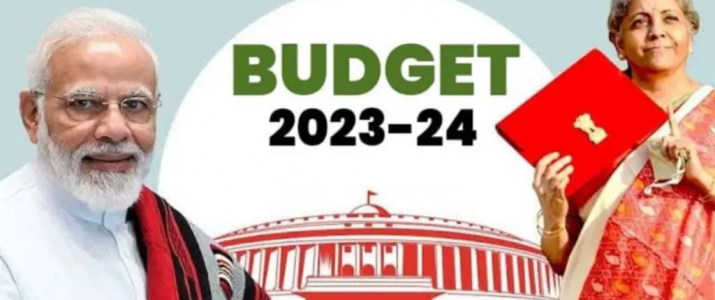TDS On Purchase of Immovable Property – Section 194-IA
The buyer of immovable property is under a statutory obligation to deduct the TDS and pay it to the government within the due date. TDS has to be deducted under section 194-IA of the Income Tax Act, 1961. We have tried to explain the provisions in simplified language.
Who is liable to deduct TDS u/s 194-IA?
A Buyer of the property who is responsible for paying (other than the person referred to in section 194LA) to a resident seller any sum by way of consideration for transfer of any immovable property other than agricultural land.
Criteria to be met, so that TDS has to be paid under section 194-IA –
- ✓ The buyer of immovable property other than agricultural land is required to deduct tax at source u/s 194-IA. It means if you buy an agricultural land, there is no liability for the payment of the TDS.
- ✓ The seller should be a resident person. Thus, this section is not applicable where the seller is a non-resident. In case the seller is a non-resident section, 195 is applicable and TDS has to be paid according to that section.
- ✓ Even if the buyer has no income, still TDS has to be deducted and paid.
- ✓ The purpose of purchase is not relevant, i.e. it is immaterial whether the property is acquired as stock-in-trade or as a capital asset.
Important definitions for section 194-IA
Q. What is Immovable property?
Ans: Any land or any building or part of a building. But Immovable property shall not include agricultural land, which is not a capital asset.
Q. What is Agricultural Land?
Ans: Agricultural Land means agricultural land in India, not being a land situated in any area referred to in items (a) & (b) of section 2(14)(iii).
Q. What is “Consideration for the purposes of section 194-IA?
Ans: “Consideration for transfer of any immovable property” shall include all charges of the nature of club membership fee, car parking fee, electricity or water facility fee, maintenance fee, advance fee, or any other charges of similar nature, which are incidental to the transfer of the immovable property.
Meaning of “Agricultural Land” simplified –
Items (a) & (b) of section 2(14)(iii) are as under agricultural land situated –
(a) In any area comprised within jurisdiction of a municipality or a cantonment board having a population not less than 10,000;
or
(b) In any area within the distance, measured aerially,
- (i) Not being more than 2 km. From local limits of any municipality or cantonment board, which has a population of more than 10,000, but not more than 1,00,000
- (ii) Not being more than 6 km. From local limits of any municipality or cantonment board, which has a population of more than 1,00,000 but not more than 10,00,000
- (iii) Not being more than 8 km. From the local limits of any municipality or cantonment board, which has a population of over 10 Lakhs.
When to deduct TDS u/s 194-1A –
• At the time of credit or at the time of payment, whichever is earlier.
TDS rate /s 194-IA –
- • TDS Rate: 1%.
- • If Pan Not Available: 20%.
Threshold Limit u/s 194-IA –
• No TDS where consideration is less than Rs. 50 Lakhs.
More than 1 buyer or seller –
More than 1 Buyer
• More than one buyer: In the case of more than one buyer and the purchase price of each buyer is less than Rs. 50 lakhs but the aggregate sales consideration of the property is more than Rs. 50 Lakhs, section 194-IA will be applicable and all the buyers will be required to deduct TDS on their respective share of the purchase price.
Note – For contradictory views, refer: Vinod Soni vs. ITO (2019)
• More than one seller: If there is more than one seller in a single sale deed in respect of the property and the aggregate consideration for the property exceeds Rs. 50 Lakhs however the share of each co-owner is less than Rs. 50 Lakhs, section 194-IA will be applicable. Therefore, the buyer would be required to deduct TDS u/s 194-IA.
Important Points on TDS On Purchase of Immovable Property – Section 194-IA –
- • If the immovable property is purchased from a non-resident person for any value, no TDS is required to be deducted u/s 194-IA as section 195 shall apply in such a case.
- • It is not necessary that the land or building should be situated in India. Thus, if any person purchases property outside India from a person resident in India, he is liable to deduct tax at source @ 1%.
- • This is a unique section as TAN is not required in this section for making deduction of tax at source.
- • Section 194-1A shall not be applicable where the immovable property has been transferred by way of gift, will or inheritance as there is no consideration in this case.
- • In the case where the property value is Rs. 50 Lakhs or more and payment is made in installments, TDS shall be required to be deducted on every part of payment (installment) of the consideration.
Amendment on Section 194-IA by Finance Bill, 2022:
The cases where the actual consideration is different from stamp duty value Amendment by Finance Bill, 2022:
- • The Income Tax Act, 1961 provides for deduction of tax at source @ 1% where the sales consideration
Of the property is not less than Rs. 50 Lakhs. However, section 194-IA was not consistent with the
provisions of section 43CA and section 50C of the Act. - • In order to bring consistency, the Finance Bill, 2022, has proposed amendment in section 194-1A, and
now TDS @ 1% shall be deductible on the sales consideration or the stamp duty value of the
immovable property, whichever is higher. - • But where both the sales consideration as well as the stamp duty value are less than Rs. 50 Lakhs,
no deduction of tax will be required u/s 194-IA. - • This amendment is effective from 01st April 2022
How and When TDS has to be paid under section 194-IA –
- • TDS deducted u/s 194-IA is to be deposited within a period of 30 days from the end of the month in which tax is so deducted.
- • TDS is to be deposited electronically through a challan-cum-statement in Form No. 26QB. This
challan can be accessed at the NSDL portal. - • PAN of both buyer and the seller are sufficient for the purposes of Form 26QB. Other details needed
are the details of property sold, address details of buyer and seller along with their email id and mobile numbers. - • The person (buyer) who has deducted & deposited tax u/s 194-1A shall issue TDS certificate in Form No. 16B to the seller within 15 days from the due date of furnishing the challan-cum-statement in Form No. 26QB.
Important Note – No TAN is required for deduction of tax at source u/s 194-1A and no filing of TDS return is required.
Penalties Applicable on non-filing of Form 26QB.
| Interest on: | Calculation |
| Non-deduction of TDS | 1% per month for the period from the date on which TDS is deductible/collectible to the date on which TDS/TCS is actually deducted. |
| Non-remittance of TDS | 1.5% per month for the period from the date on which TDS is deducted to the actual date of payment. |
| Late filing fee: | Calculation |
| Late filing fee under section 234E @ Rs 200 per day | In case of default of non-filing or late filing of Form 26QB, a penal fee is applicable under section 234E of the income tax act. Rs. 200 has to be paid for every day during which such failure continues. The buyer would also be liable for defaults of late deduction, late payment, and interest thereon. |
| Penalty | Calculation |
| Penalty under section 271H | Assessing Officer may levy penalty under section 271H at his discretion. This section is applicable when a statement as required by the tax laws is not submitted timely. The penalty under this section must be more than Rs 10,000 and can extend to Rs 1 lakh. However, if TDS is deposited with a fee & interest and the statement is submitted within 1 year of the time prescribed, no penalty shall be levied. |



